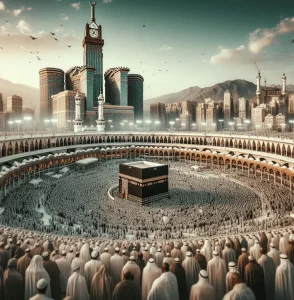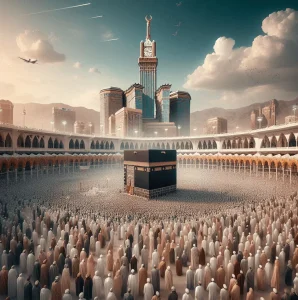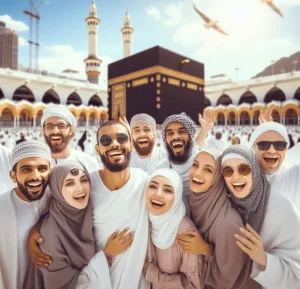Table of Contents
What is Umrah Embarking on the spiritual journey of What is Umrah is a profound and transformative experience for Muslims worldwide. Unlike the obligatory Hajj, What is Umrah is a voluntary pilgrimage to the holy city of Mecca, offering a unique opportunity to cleanse the soul, seek forgiveness, and attain spiritual tranquility. This sacred journey, often referred to as the “lesser pilgrimage,” can be performed at any time of the year, making it accessible to millions of devout followers who seek closeness to Allah.

Understanding the Essence of Umrah
To truly grasp what is Umrah, one must delve into its religious and historical significance. The word “Umrah” is derived from the Arabic term meaning “to visit a populated place.” In the Islamic context, it denotes visiting the Kaaba, the House of Allah in Mecca, and performing a series of devotional acts. These acts symbolize the purification of the soul and the renewal of faith. The What is Umrah pilgrimage consists of several rituals, each imbued with profound spiritual meaning and historical reverence.
The Rituals of Umrah
Umrah comprises four primary rituals: Ihram, Tawaf, Sa’i, and Halq or Taqsir. Each ritual is a step toward attaining spiritual purity and demonstrating one’s devotion to Allah.
1. Ihram: The State of Spiritual Sanctity
Ihram marks the beginning of the What is Umrah pilgrimage. Pilgrims enter a state of spiritual sanctity by donning specific attire—two white, unstitched sheets for men and modest clothing for women. This attire symbolizes purity, equality, and the renunciation of worldly possessions. Before assuming Ihram, pilgrims perform a ritual ablution and declare their intention (niyyah) to undertake Umrah. This act of intention is a solemn pledge to complete the pilgrimage with sincere devotion.
2. Tawaf: Circumambulating the Kaaba
The heart of What is Umrah is Tawaf, the act of circumambulating the Kaaba seven times in a counterclockwise direction. Pilgrims begin their Tawaf from the Black Stone (Hajar al-Aswad) and recite prayers and supplications while encircling the sacred structure. This ritual signifies the unity of Muslims worldwide, as they move in harmony around the Kaaba, reflecting the centrality of Allah in their lives. The Tawaf is a deeply moving experience, fostering a sense of spiritual closeness to the divine.
3. Sa’i: The Journey Between Safa and Marwah
Following Tawaf, pilgrims perform Sa’i, which involves walking seven times between the hills of Safa and Marwah. This ritual commemorates Hagar’s desperate search for water for her son, Ishmael. As pilgrims traverse this path, they reflect on Hagar’s unwavering faith and endurance. Sa’i serves as a reminder of the importance of patience, perseverance, and trust in Allah’s mercy. The journey between Safa and Marwah is both a physical and spiritual endeavor, reinforcing the themes of faith and devotion.
4. Halq or Taqsir: Symbolic Haircut
The final ritual of Umrah is Halq (shaving the head) or Taqsir (trimming the hair). For men, shaving the head is an act of humility and purification, while women typically cut a small portion of their hair. This symbolic gesture signifies the completion of Umrah and the pilgrim’s readiness for a new beginning, free from past sins and impurities. It is a moment of renewal and spiritual rejuvenation.
Preparing for Umrah
Undertaking Umrah requires meticulous preparation to ensure a smooth and spiritually fulfilling journey. Pilgrims should begin by obtaining the necessary travel documents, including a valid passport and visa. It is advisable to consult with an experienced travel agent specializing in Hajj and Umrah arrangements to streamline the process. Additionally, acquiring comprehensive travel insurance can provide peace of mind during the pilgrimage.
Spiritual and Physical Preparation
Spiritual preparation is paramount for pilgrims. Engaging in regular prayers, reciting the Quran, and seeking forgiveness for past sins help cultivate a pious mindset. Physical preparation is equally important, as Umrah involves considerable walking and physical exertion. Pilgrims should maintain good health, exercise regularly, and stay hydrated to ensure they can perform the rituals with ease.
Journey to Mecca
The journey to Mecca is an integral part of the Umrah experience. Pilgrims typically travel by air, arriving at King Abdulaziz International Airport in Jeddah. From there, they proceed to Mecca by bus or car. Upon arrival in the holy city, pilgrims should take a moment to absorb the spiritual atmosphere and prepare themselves for the sacred rituals ahead.
Etiquette and Conduct During Umrah
Adhering to proper etiquette and conduct during what is Umrah is essential to maintain the sanctity of the pilgrimage. Pilgrims should exhibit patience, humility, and respect toward fellow worshippers. Avoiding unnecessary distractions and focusing on the spiritual significance of the rituals enhances the overall experience. It is also crucial to adhere to local customs and regulations to ensure a harmonious and respectful pilgrimage.
Navigating Common Challenges
While Umrah is a deeply rewarding experience, pilgrims may encounter certain challenges. Understanding and anticipating these challenges can help ensure a smoother journey.
Crowds and Congestion
Mecca attracts millions of pilgrims annually, leading to crowded conditions, especially during peak times. Pilgrims should remain patient and avoid rushing through the rituals. It is advisable to perform Tawaf and Sa’i during less busy periods to minimize congestion.
Health and Safety
Maintaining good health is crucial during Umrah. Pilgrims should carry essential medications, stay hydrated, and avoid excessive physical exertion. Wearing comfortable footwear and taking regular breaks can prevent fatigue and injuries. It is also important to be aware of the nearest medical facilities in case of emergencies.
Language Barriers
For non-Arabic-speaking pilgrims, language barriers can pose challenges. Learning basic Arabic phrases and carrying a translation guide can facilitate communication. Many guides and volunteers in Mecca are multilingual and can assist with directions and information.
Enhancing the Spiritual Experience
To enhance the spiritual experience of what is Umrah, pilgrims can engage in additional acts of worship and reflection. Spending time in prayer and meditation at the Masjid al-Haram, the Grand Mosque, allows pilgrims to deepen their connection with Allah. Reciting the Quran, offering voluntary prayers (Nafl), and seeking forgiveness further enrich the spiritual journey.
Reflection and Gratitude
Upon completing what is Umrah, pilgrims should take time to reflect on their experience and express gratitude to Allah. The pilgrimage is a profound opportunity for self-improvement and spiritual growth. Sharing the experience with family and friends, and encouraging others to undertake Umrah, can inspire a collective sense of faith and devotion within the community.
What is Umrah
what is Umrah is a sacred and transformative journey that offers Muslims a unique opportunity to renew their faith, seek forgiveness, and attain spiritual purity. Understanding what is Umrah and navigating its rituals with ease allows pilgrims to immerse themselves fully in the spiritual essence of the pilgrimage. Through meticulous preparation, adherence to proper conduct, and a focus on spiritual growth, pilgrims can embark on this journey with confidence and devotion. Umrah is not just a physical journey, but a profound voyage of the soul, bringing one closer to Allah and instilling a lasting sense of peace and fulfillment.





More Stories
Experience the Powerful Serenity of a Memorable Trip to Umrah
The Essential Guide to Umrah Visa Fee from USA Made Easy
Umrah Insights: Reflections from Pilgrims on the Spiritual Path